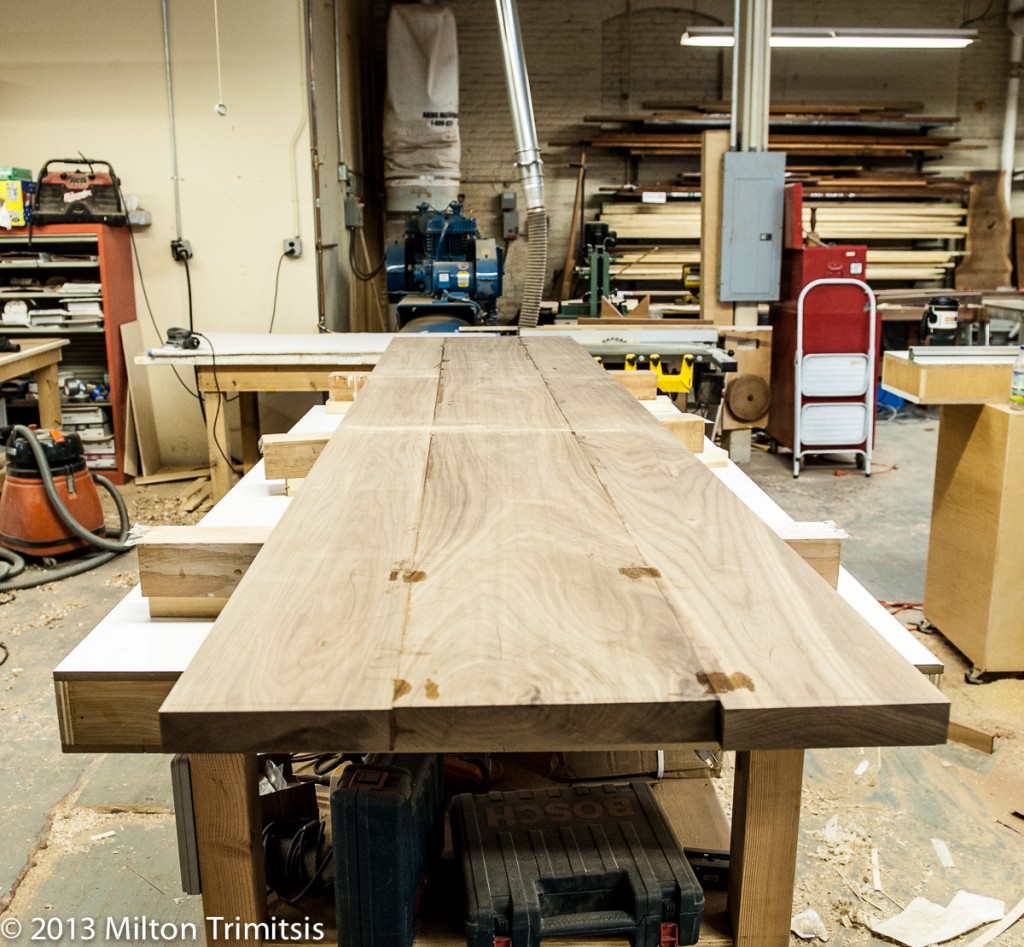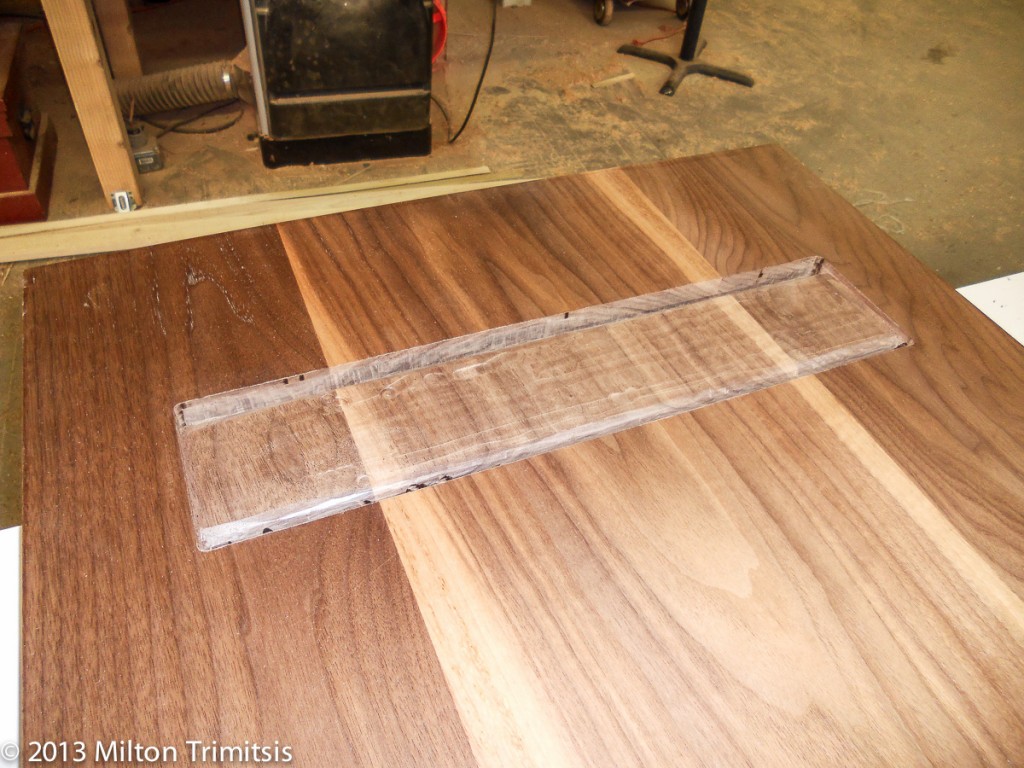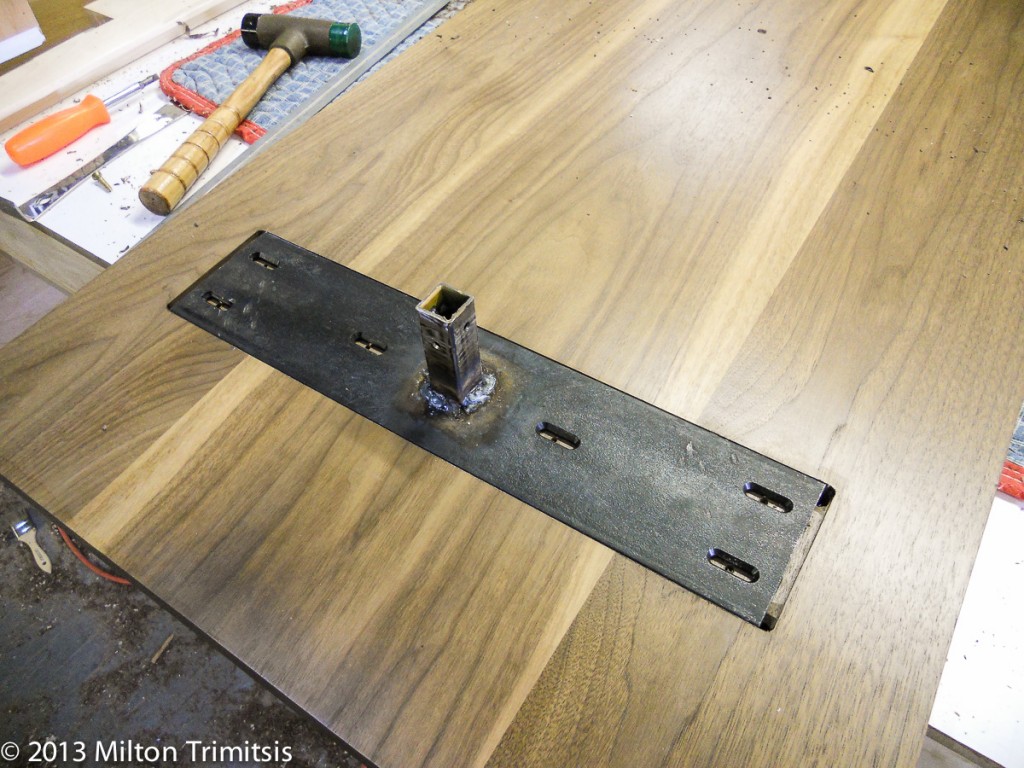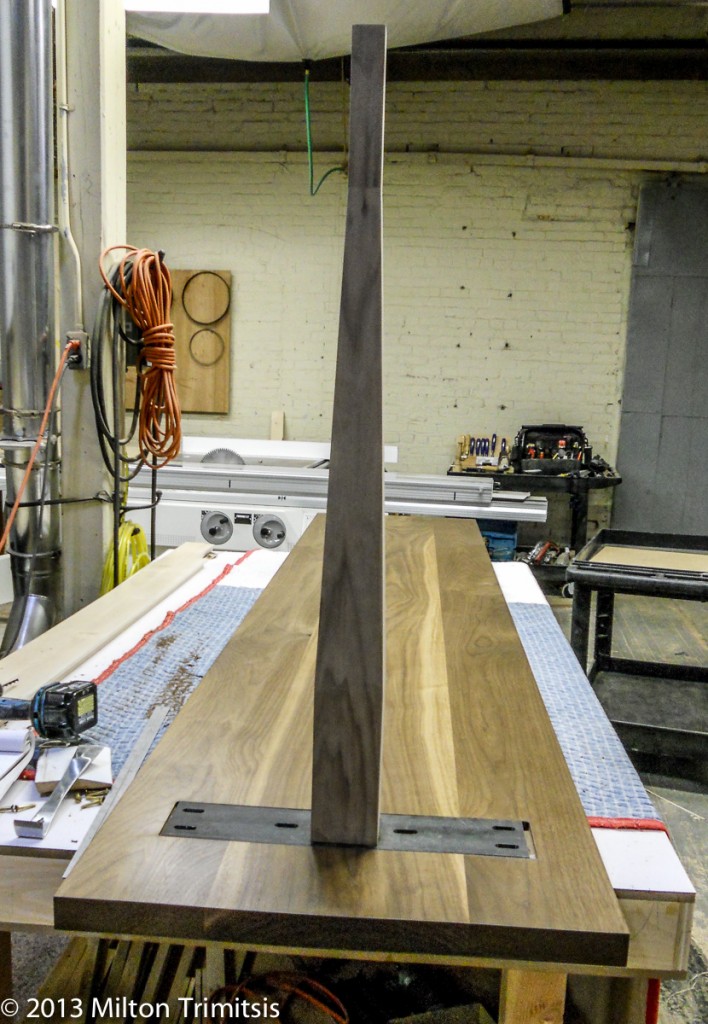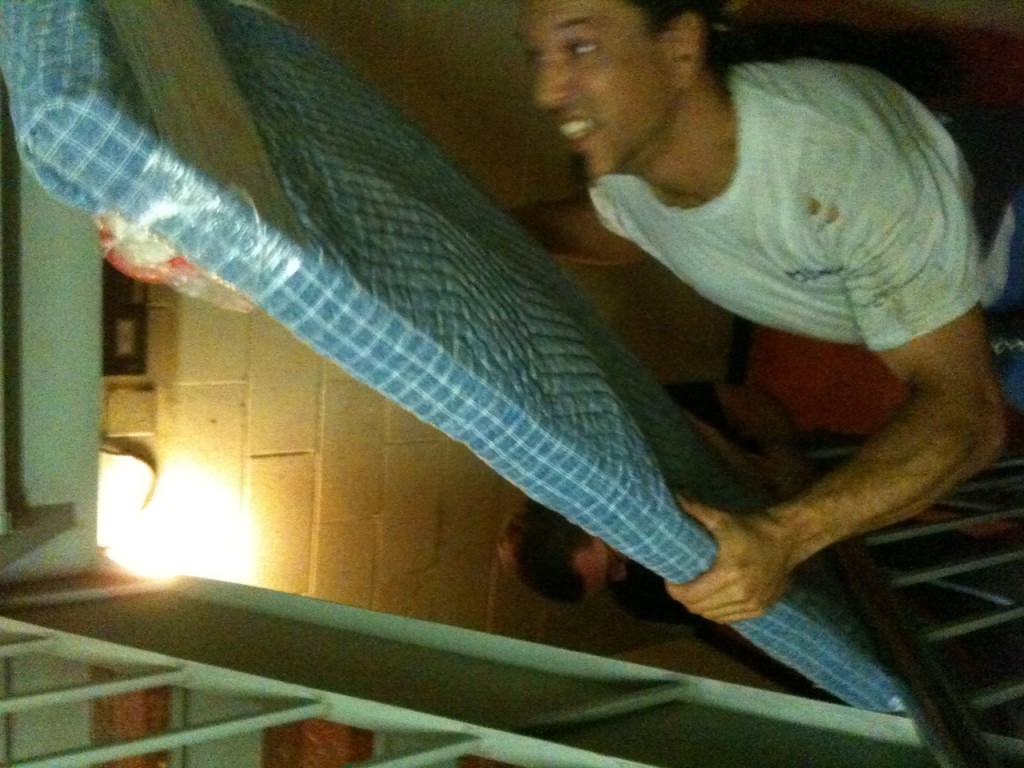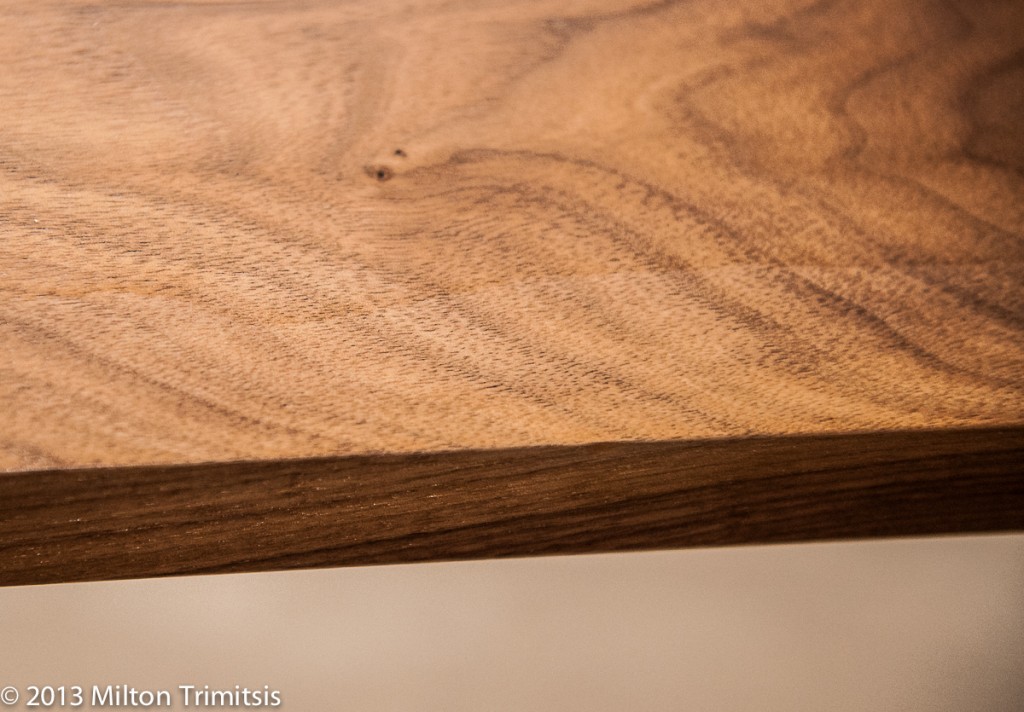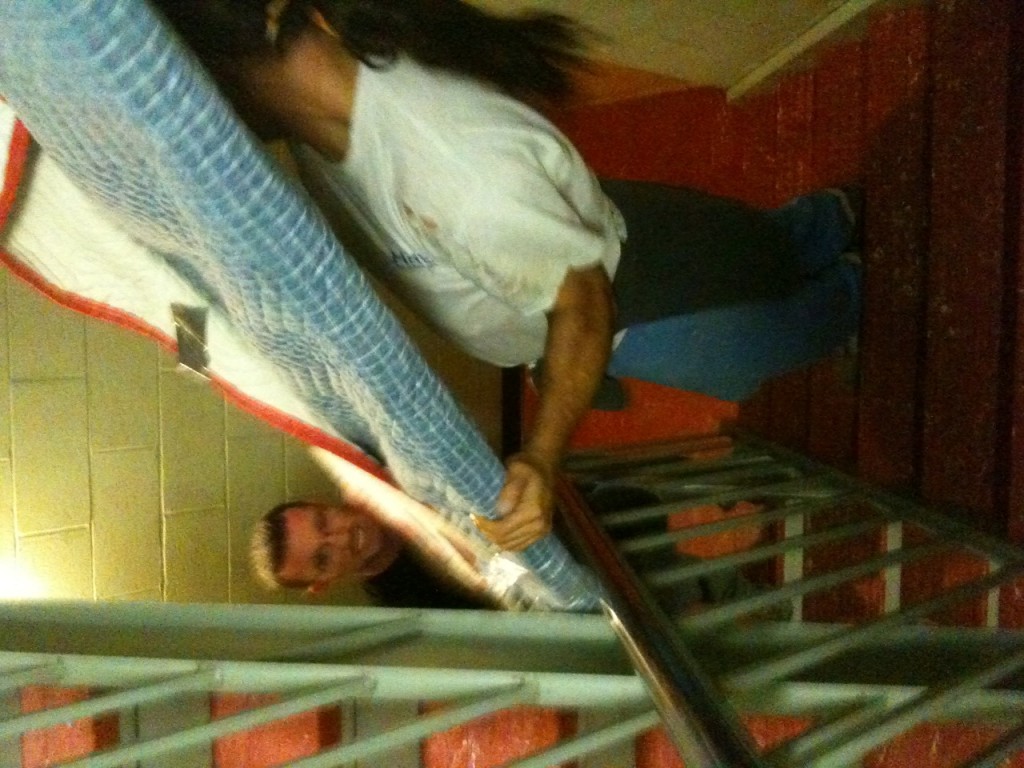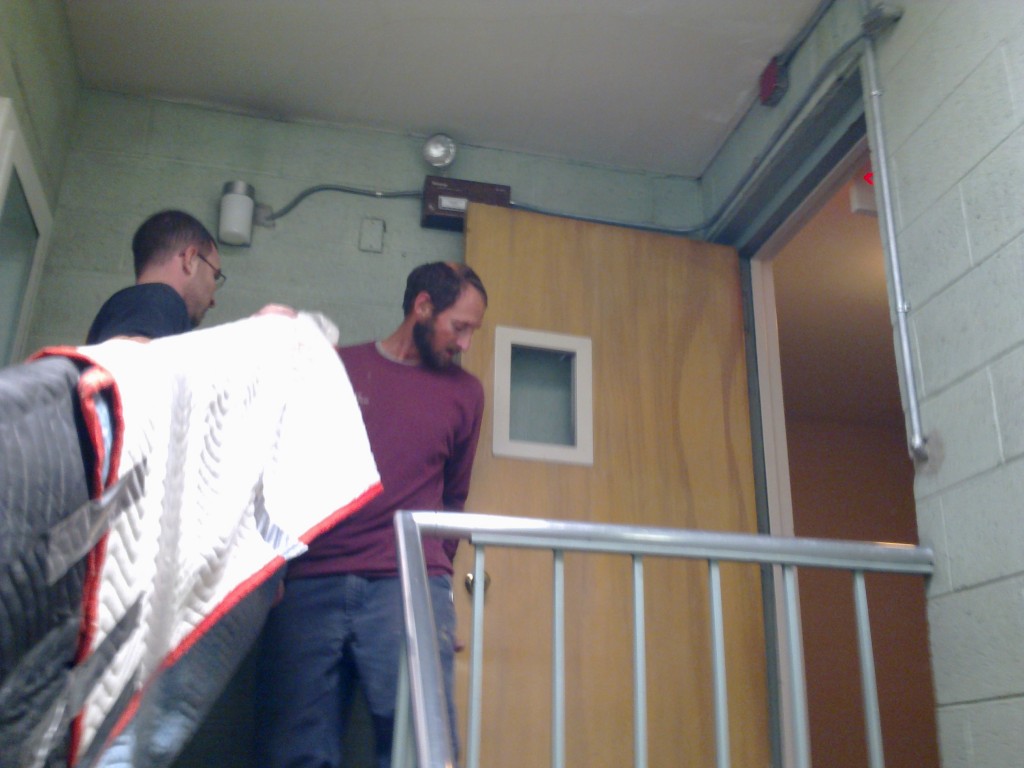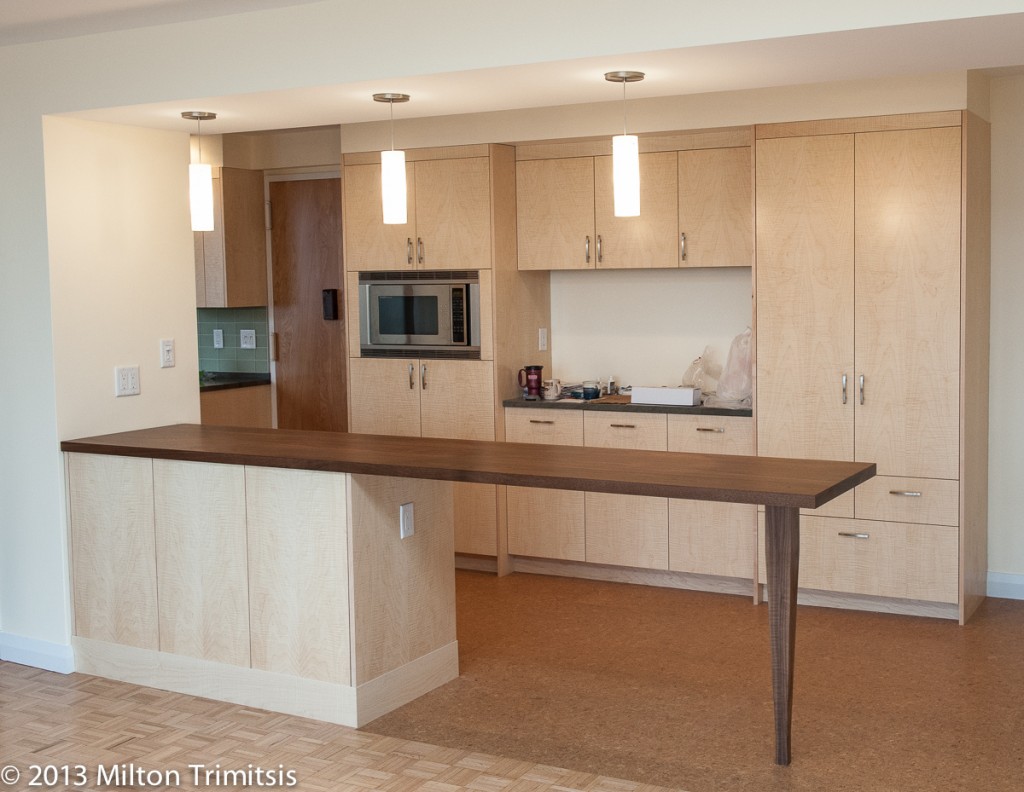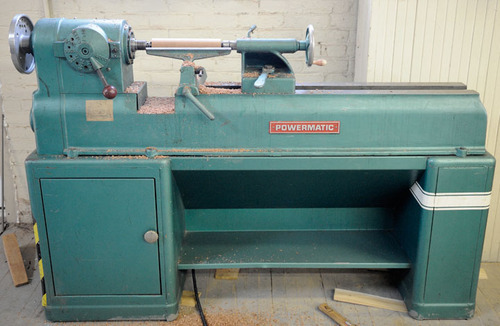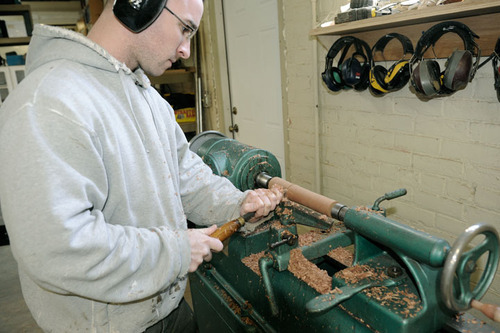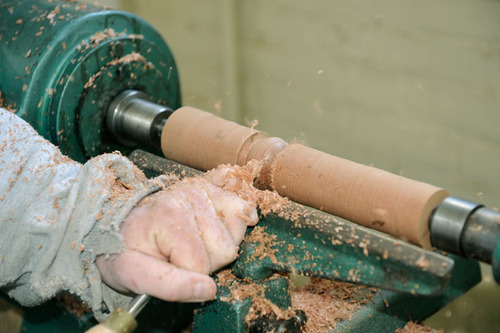History versus gravity
Posted on 23 November 2010
We’ve recently started work on the temporary stabilization of a lovely 1840 Greek Revival carriage house near Boston, MA. When I was first asked to look at the project over the summer, the building was substantially out of plumb. When we started work last week, the condition of the building was becoming alarming.
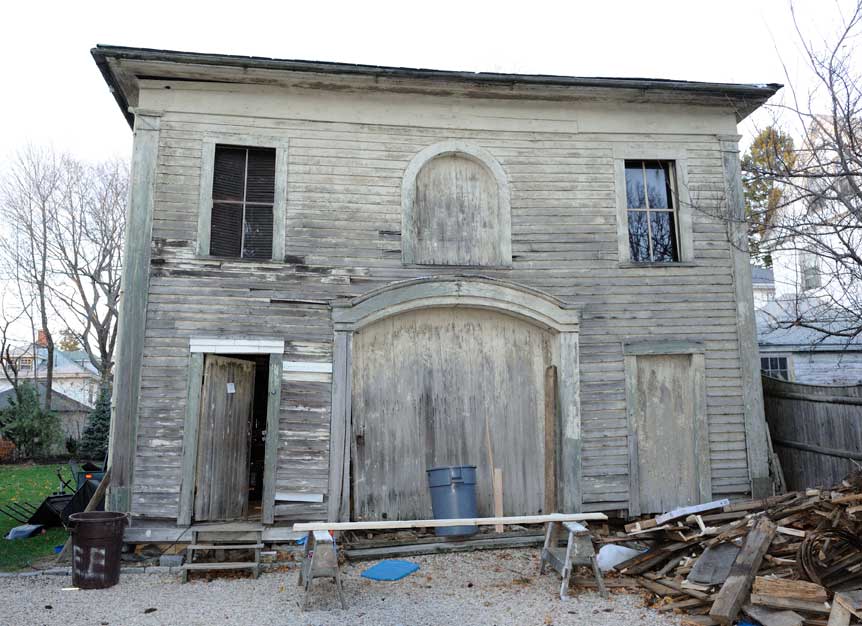
The building had been leaning considerably to the right; now it had pitched over further, and seemed to be tipping backwards as well. We set up a plumb line as a reference mark to allay our fears that it was moving further by the hour.

Among the carriage house’s many woes, the floor framing system, sill, and foundation had all failed on the right and rear sides of the building. Critters and fungi had also taken their toll on many of the post bottoms.
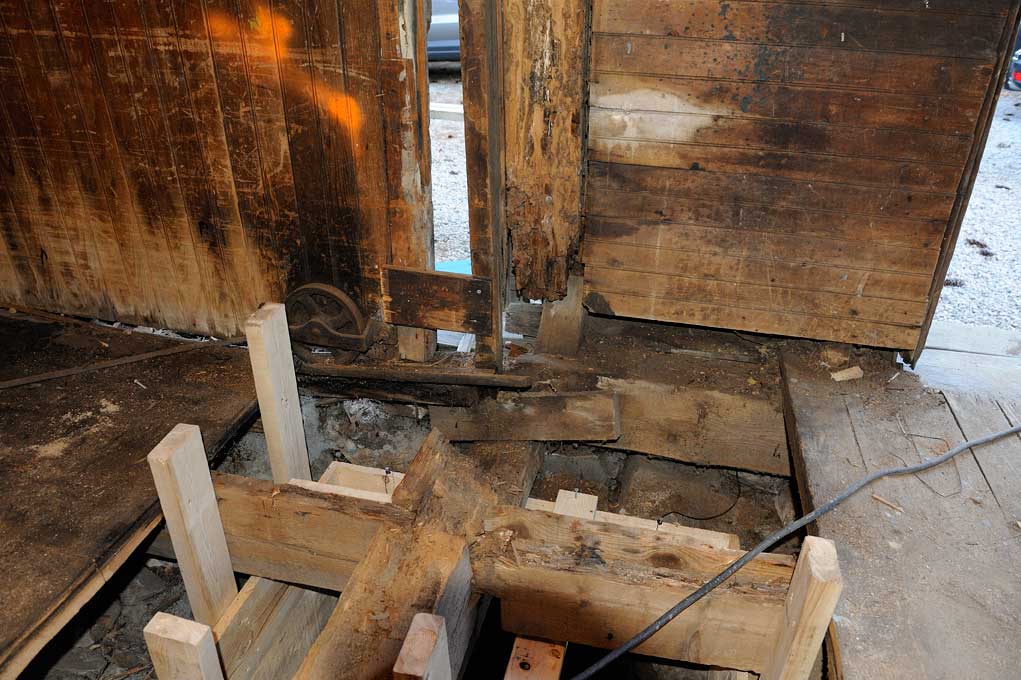
After doing some exploratory demolition to assess the extent of damage, we installed temporary cross-bracing front and rear.
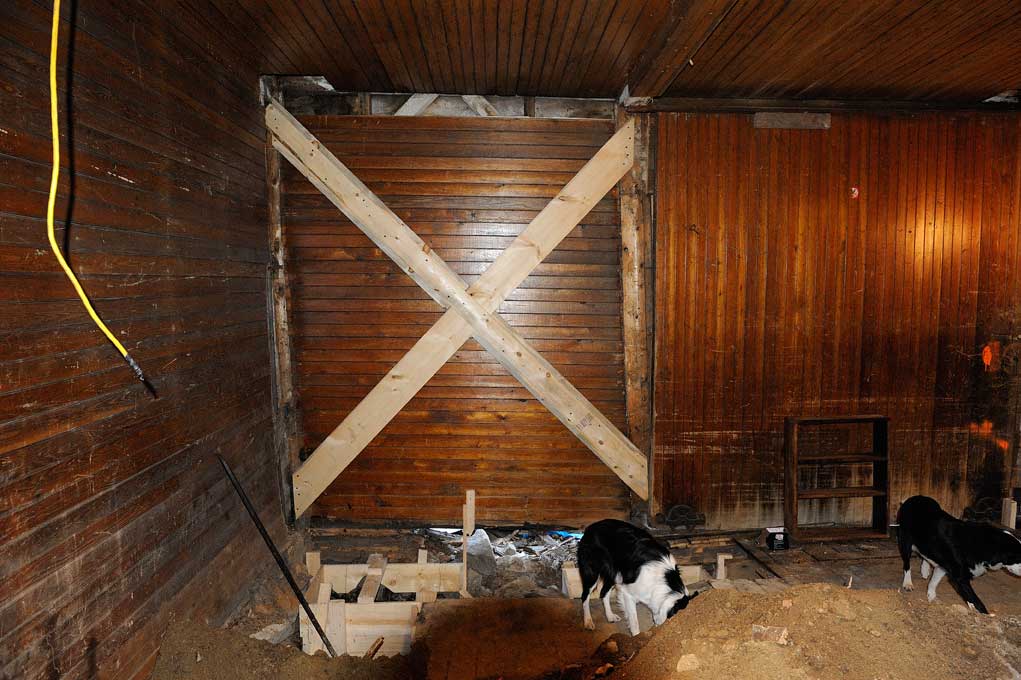
With these confidence-builders in place, we dug and formed six footings that would give us the Archimedean platform to help prop the building up.
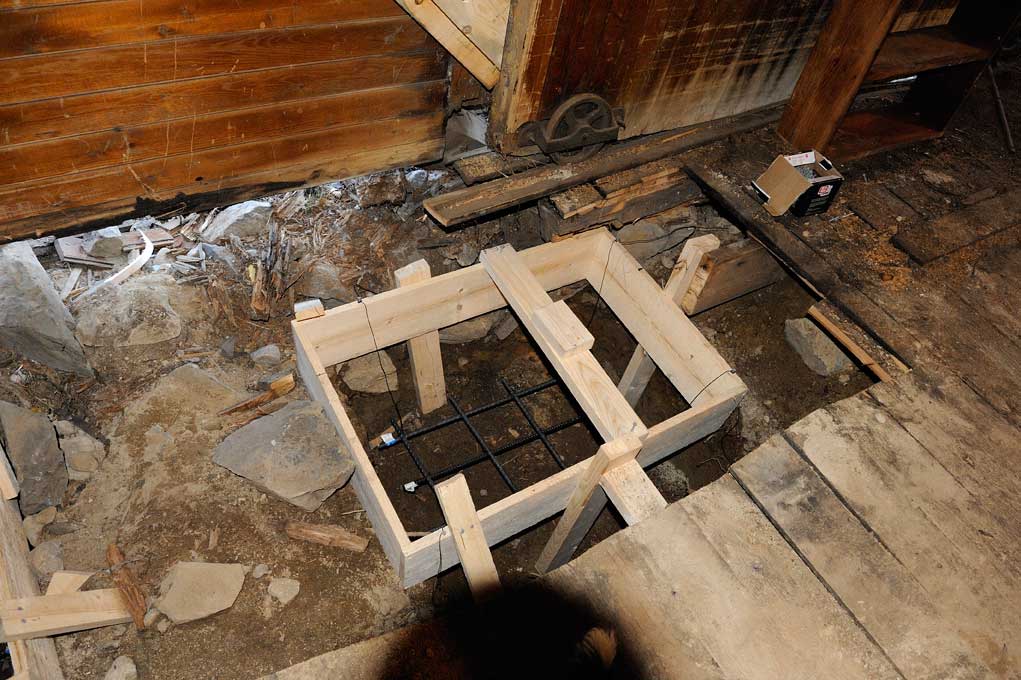
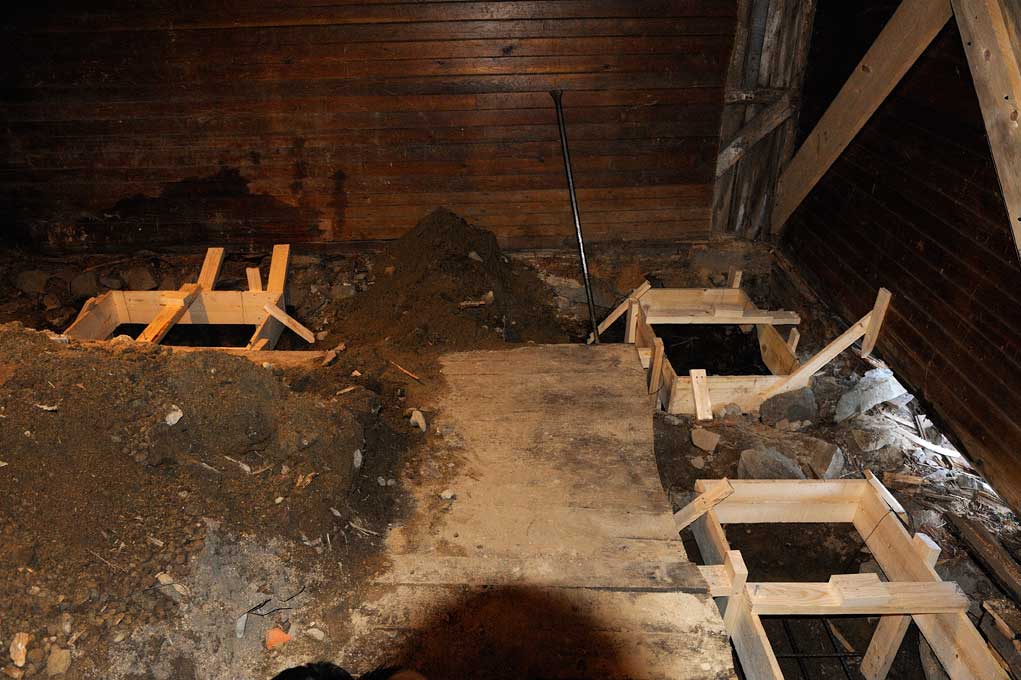
Tomorrow’s Thanksgiving, so we pour concrete Friday morning. With any luck, new posts and beams start to go up on Monday.
Tagged: carriage house, footings, structural work

